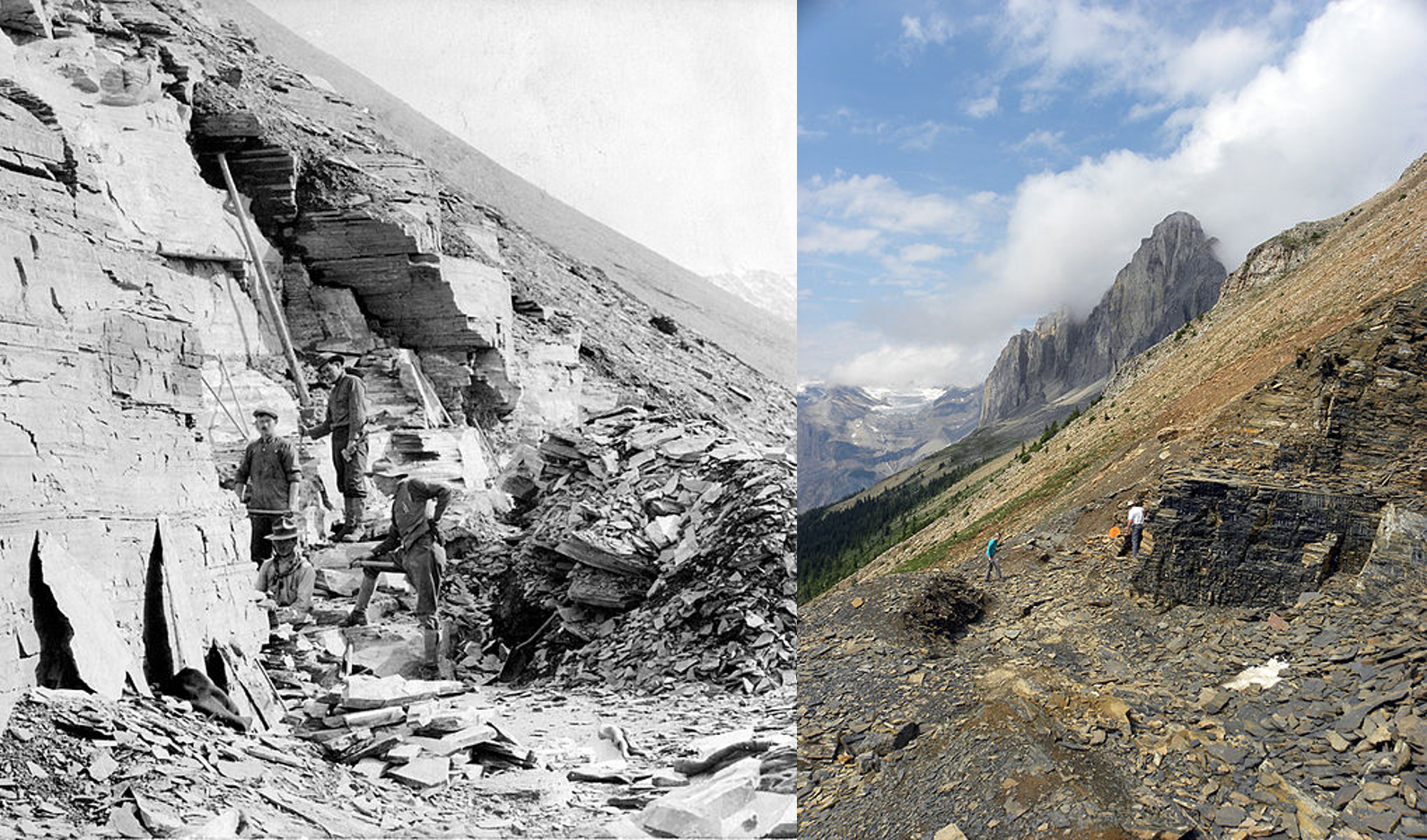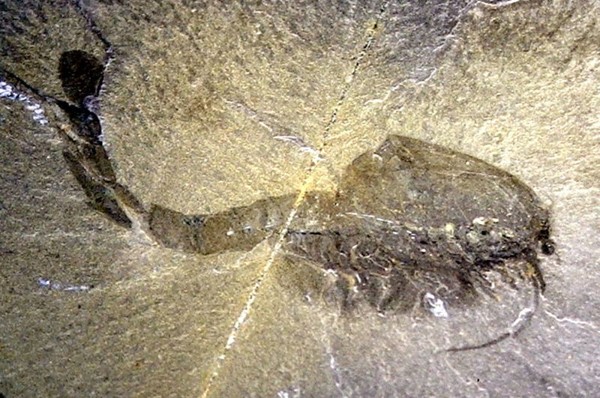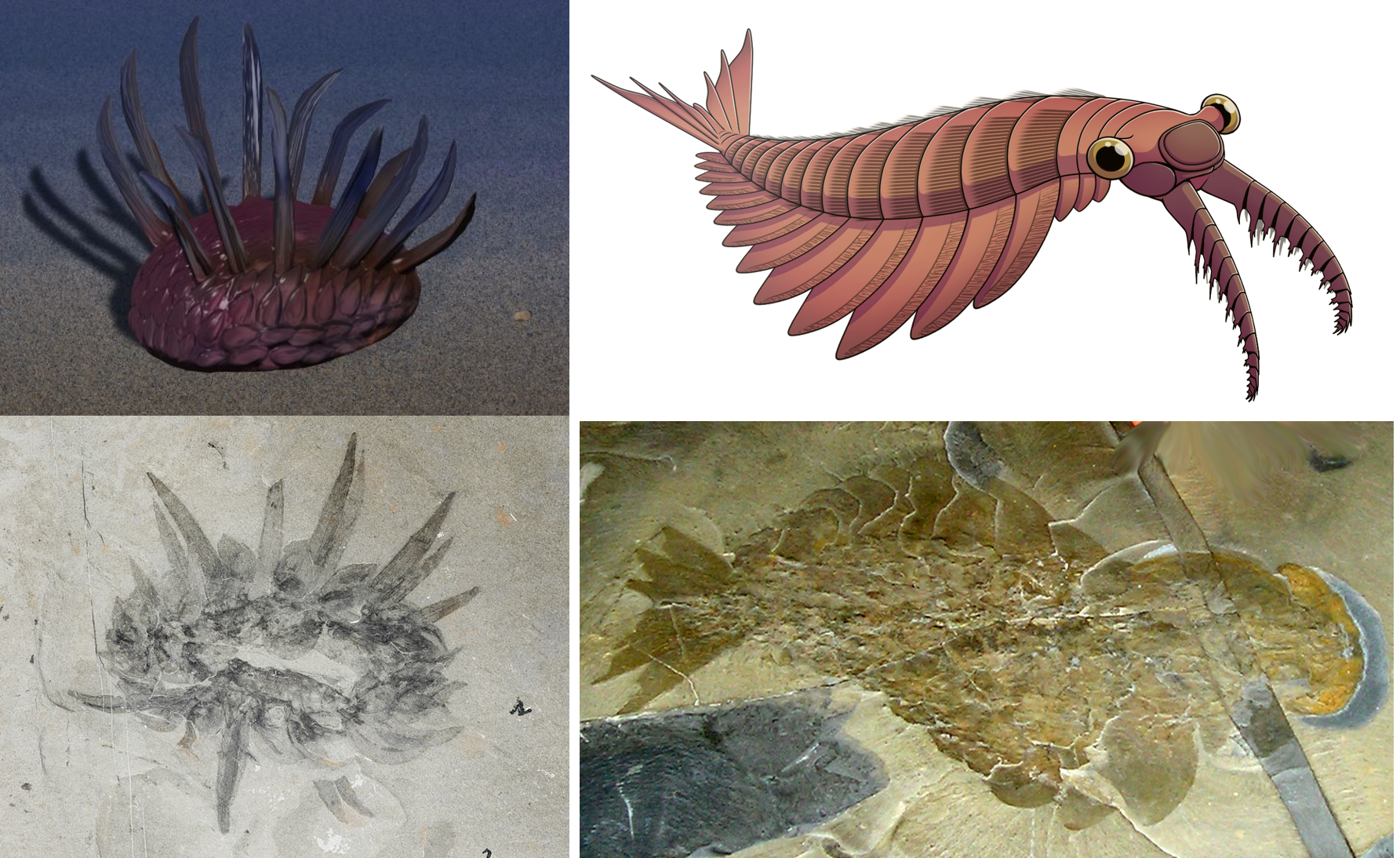Listen to Episode 89 on PodBean, Spotify, YouTube, or your favorite place to find podcasts!
More than 100 years ago, explorers in the Canadian Rocky Mountains came across some exceptional fossils. Nowadays, that locality is famous as one of the most important fossil sites in the world for understanding animal evolution, Earth history, and fossil preservation. This episode, we talk about the incredible Burgess Shale.
In the news
Little shark teeth might be a sign of an ancient great white nursery
Dinosaur bite marks indicate lots of scavenging and maybe cannibalism
One of the oldest known ichthyosaurs was pregnant
Gut contents reveal the dietary habits of the armored Borealopelta
The Burgess Shale
Located in the Canadian Rocky Mountains of British Columbia, the Burgess Shale is one of the most famous, well-studied, and scientifically influential fossil localities ever found. Over the past century, tens of thousands of fossils have been excavated from several different sites, including over 150 species new to science, from one of the most mysterious time periods in evolution. And as if that’s not enough, the unusual and exquisite preservation of these fossils provide incredible levels of detail, including the kinds of soft tissue information we hardly ever get from the fossil record. Stephen Jay Gould called these specimens “the world’s most important fossils.”

Images in the Public Domain.
The site as it’s known today was discovered and named in the early 1900s by Charles D. Walcott, whose own excavations resulted in the Walcott Quarry, the most well-studied Burgess Shale site. In following decades, many excavation teams from several institutions would work on the site and open up a number of other dig areas. In 1981, the site was declared a UNESCO World Heritage Site, a locality of international importance.
Work on the site and its fossils is still ongoing, undertaken by the crew at the Royal Ontario Museum.
A Rarely-Seen Cambrian Ecosystem
The site’s eponymous shale was laid down as seafloor mud off the coast of Laurentia during the Middle Cambrian, 505-510 million years ago. Long before these rocks were thrust upward as part of the Rocky Mountains, this environment was an ocean basin at the foot a large submarine cliff called the Cathedral Escarpment.

What makes the Burgess Shale truly remarkable is the preservation of its fossils. Whereas most fossil sites preserve mineralized hard tissues or occasional mineralized soft tissues, this site’s fossils typically come in the form of flattened carbonaceous films which preserve fine details of soft tissues. In fact, nearly all Burgess Shale fossils are entirely soft-bodied creatures, the kinds of animals that are rarely fossilized at all at other sites.
Exactly why these fossils are preserved in such a unique manner isn’t entirely clear, but geologists suspect a combination of factors that would rapidly preserve tissues while also slowing their decomposition. It might even be that the minerals in the local sediments were particularly suited to hinder bacterial action and/or quickly mineralize tissues.
Whatever the circumstances were, they weren’t unique to one site. The same sort of preservation is seen at a long list of Cambrian fossil sites, including the famous Chengjiang site in China. A paper in 2014 identified 50 of these “Burgess Shale-type localities,” and other possible candidates have been reported even more recently in places like Sweden and China. Maybe there was something special about Cambrian seas that produced so many amazing fossil localities for us to explore.
Endless forms…
The animal life of the Burgess Shale lived at the tail end of the Cambrian Explosion, so it’s an excellent place to study how the ecosystems and animal life of our modern world came to be. Many Burgess Shale animals are so strange that their exact habits and relationships to living species have been subject to long debates, and some of those debates are still ongoing!



Want More?
The Burgess Shale – the Royal Ontario Museum’s website is full of great info
Fossil Gallery – browse through a gallery of Burgess Shale fossils
Gaines 2014 [technical] is a great overview of Burgess Shale-type fossil sites and preservation
There’s No Scientific Basis for Race – an article we mentioned while answering this episode’s Patron Question.
—
If you enjoyed this topic and want more like it, check out these related episodes:
- Episode 9 – The Cambrian Explosion
- Episode 31 – The Ediacaran Biota
- Episode 110 – Mazon Creek Fossil Beds
We also invite you to follow us on Twitter, Facebook, or Instagram, buy merch at our Zazzle store, join our Discord server, or consider supporting us with a one-time PayPal donation or on Patreon to get bonus recordings and other goodies!
Please feel free to contact us with comments, questions, or topic suggestions, and to rate and review us on iTunes!